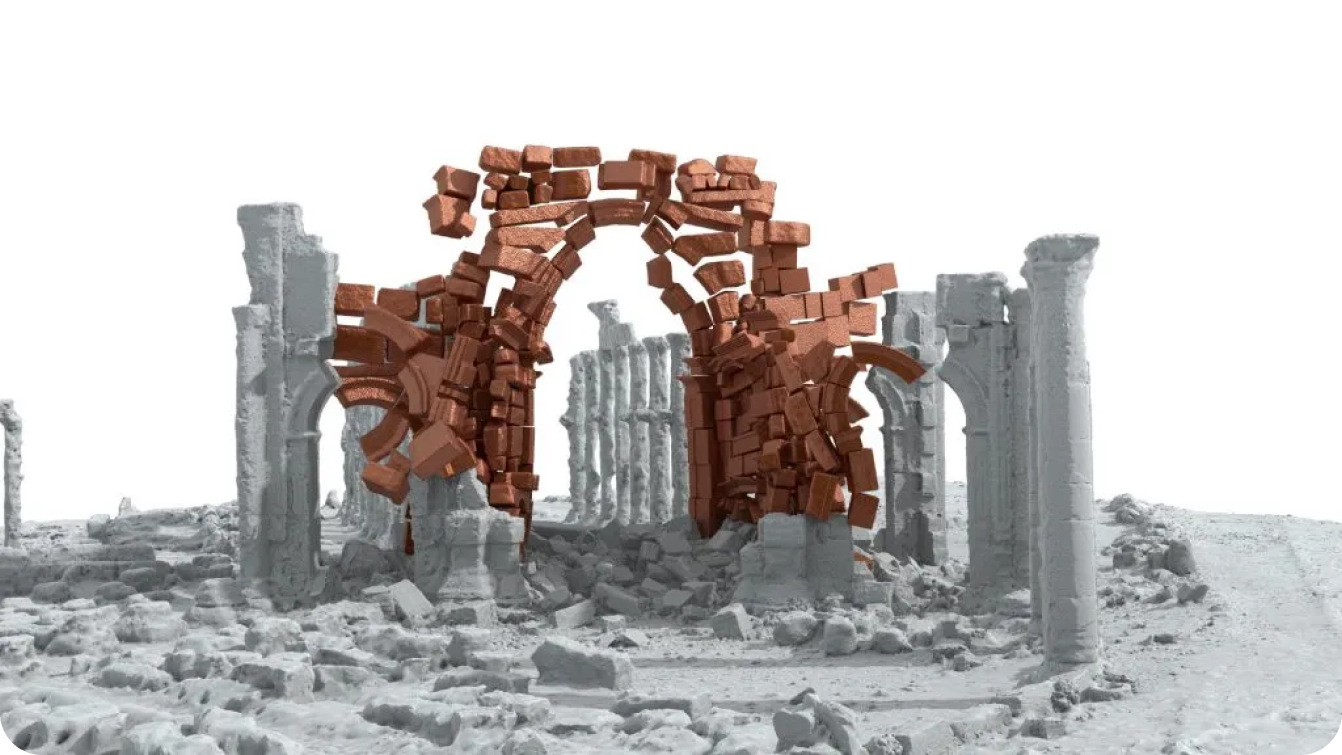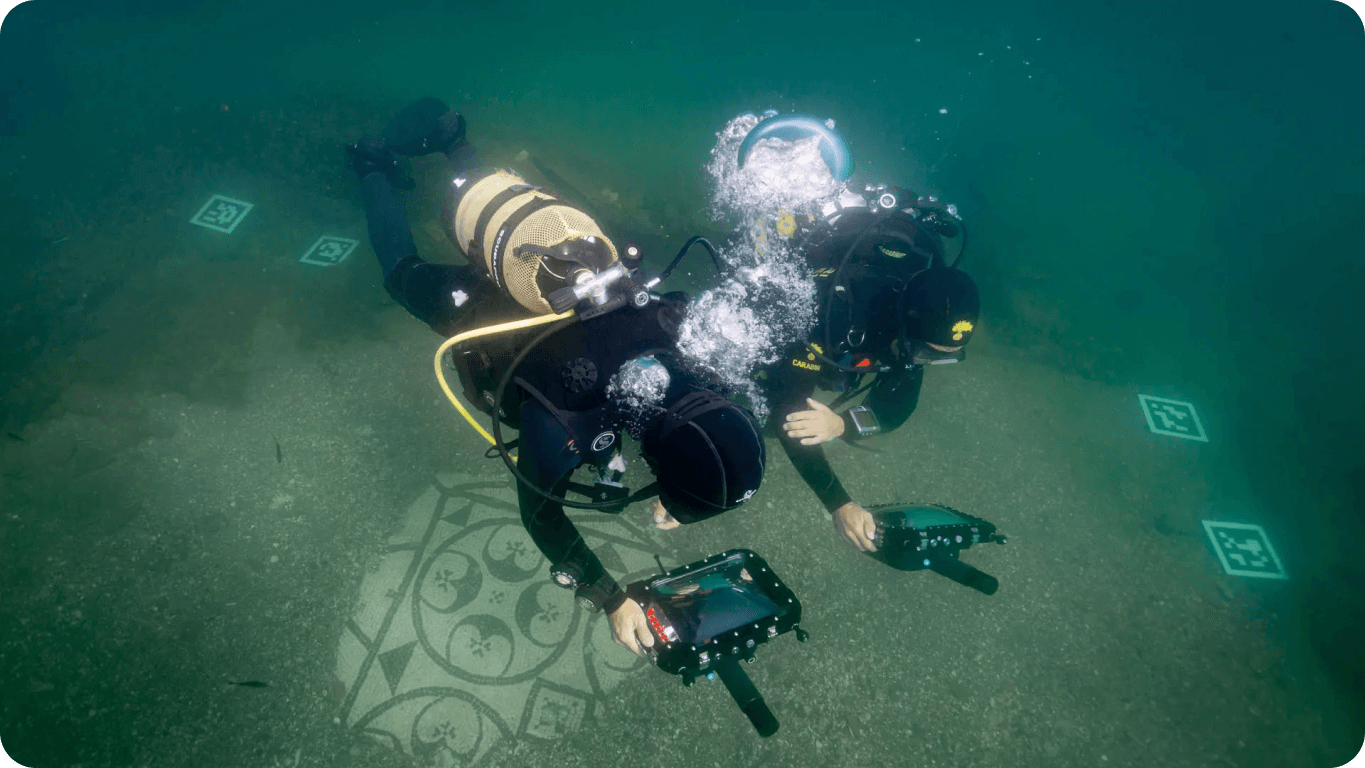クッキー設定
すべてのCookieを受け入れる」をクリックすると、サイトナビゲーションの強化、サイトの利用状況の分析、およびマーケティング活動の支援を目的として、お客様のデバイスにCookieが保存されることに同意したものとみなされます。詳細情報
クッキー設定
すべてのCookieを受け入れる」をクリックすると、サイトナビゲーションの強化、サイトの利用状況の分析、およびマーケティング活動の支援を目的として、お客様のデバイスにCookieが保存されることに同意したものとみなされます。詳細情報
考古学は、遺物の発掘や分析を通じて古代の歴史を研究する学問であるが、探索すべき広大な地域や遺物の壊れやすさといった課題にしばしば直面する。従来の方法では時間がかかり、隠れた遺跡や宝物を見逃してしまうことさえある。人工知能(AI)はこのような問題を解決してくれる。例えば、ユカタン半島で最近行われた画期的な調査では、ディープラーニングを用いて、密生した植物の下に隠れていた、これまで知られていなかった6万以上の古代マヤの遺跡を発見した。
特にコンピュータ・ビジョンは、考古学者が画像を解析して遺物を検出し、古代の遺跡を正確に地図化するのに役立つ。画像解析は、景観に隠されたパターンを発見したり、壊れた遺物をつなぎ合わせたりするのに役立ち、発見を迅速化し、歴史や文化の細部まで保存することができます。考古学者たちは、これまで以上に速く、より正確で、より洞察力のある、AI主導の新しい方法で過去を探求しています。
AIは、データ分析の進歩のおかげで、20世紀末から考古学に波及し始めた。1990年代になると、考古学者たちは収集した膨大な情報を分析するために機械学習やデータマイニングを使い始めた。最初の大きな成功のひとつは、AIを使って歴史的・地理的なデータパターンに基づいて遺跡のありそうな場所を予測し、発掘調査の計画を一変させたことだ。
考古学におけるAIの役割の高まりを示す初期の例として、2010年にパリに設立されたIconem社の仕事が挙げられる。Iconem社はドローンとAIを使って、戦争や紛争、自然崩壊の脅威にさらされている歴史的建造物の3Dデジタルモデルを作成している。何千枚もの画像を撮影することで、Iconem社はポンペイの古代遺跡、イラクのアッシリア都市、アフガニスタンの仏教僧院など、20カ国以上の遺跡を記録してきた。このようなデジタル保存は、教育や研究のための貴重な資源であり、特にアクセスが困難な遺跡や破損してしまった遺跡のためのものである。

2021年までには、AIは古代の遺物の修復にさえ使われるようになっていた。イタリアのRePAIRイニシアチブのようなプロジェクトは、ポンペイのような場所から壊れやすいものを慎重につなぎ合わせるためにロボットを使用した。今日、考古学におけるAIの役割は拡大し続けており、古文書の解読や衛星画像の分析といった作業に役立っている。AIは歴史の解明と保存に不可欠なツールとなっている。
コンピュータ・ビジョンは、コンピュータが視覚データを理解・解釈することを可能にするAIの一分野である。考古学では、コンピュータ・ビジョンは研究者が遺物を分析し、古代遺跡の地図を作成し、歴史的建造物を復元するのに役立っている。ディープラーニングを使って画像や動画を処理することで、コンピュータービジョンは考古学的発見の保存や解釈を容易にする洞察を引き出すことができる。
考古学者は、発掘の際に陶器や骨などの破片を何千個も発見することがよくある。従来、これらの破片を識別し、カタログ化するには、多くの時間と専門知識が必要だった。しかし、コンピューター・ビジョンを使えば、このプロセスを自動化できる。例えば、レスター大学のArch-I-Scanプロジェクトでは、画像認識と機械学習を用いて、土器片の詳細を自動的に識別・記録している。このシステムは、携帯端末からの写真を分析し、大きさ、形、デザイン、質感によって遺物を分類することができる。
.png)
AIは考古学プロジェクトの初期段階で特に役立つ。発掘が始まる前に潜在的な遺跡を特定するのに役立ち、歴史的な地域を傷つけるリスクを減らすことができる。航空画像や衛星画像を処理することで、Ultralytics YOLOv8のようなコンピューター・ビジョン・モデルは、埋もれた遺跡を検出するために物体検出を使用することができます。YOLOv8は、古代の城壁、道路、建物など、埋もれた構造物の存在を示唆するような景観の微妙な変化を検出するように訓練することができる。実際、土壌の色、植生の生え方、地面の質感のわずかな変化が、地下の遺跡を示すことさえあります。
.png)
その好例が、ポルトガルのアルト・ミーニョ地方でのケーススタディである。研究者たちは、データ増強と呼ばれる技術を使い、注釈付き古墳で学習させたAIモデルを開発した。このAIシステムは、新しい古墳の候補地を提案することができる。LiDARデータの空中視点による誤検出という課題にもかかわらず、このアプローチは専門家による検証の結果、72.53%の成功率を達成した。
考古学者が発掘調査中に、無傷の遺物ではなく、壊れた破片を発見することはよくある。従来、これらの破片をつなぎ合わせるのは時間がかかり、綿密な作業だった。しかし、AIが支援する3D復元ははるかに速い。デジタル3Dモデルを使用して、アルゴリズムが破片の形状を分析し、元の遺物を正確に再構築することができます。このプロセスは時間を節約し、正確な測定と遺物のより良い理解を提供し、それらを作成した文化についてのより深い洞察を提供することができます。
.png)
過去を探求する上でAIを活用するエキサイティングな分野のひとつに、水中考古学がある。イタリア沖の水没したローマ都市バイアエでは、AIが海中の古代遺跡の監視と保存に役立っている。水中通信を専門とする新興企業WSense社は、AIを搭載した音響モデムとセンサーのネットワークを開発した。これらのシステムは、リアルタイムで変化する海の状況に適応し、環境データを送信する。これらのシステムは、遺跡の遠隔監視を可能にし、ダイバーが水中でコミュニケーションをとり、ナビゲートするのを助ける。

AIは古文書の解読においても進歩を遂げている。ディープマインドの最先端ツールであるIthacaは、ディープラーニングを用いて破損した碑文を修復し、その起源を特定し、正確な年代を特定する。ギリシャ語の碑文の膨大なデータセットで訓練されたIthacaは、62%の精度でテキストを復元し、本当の年代から30年以内の年代を特定することができる。AIは、学者がギリシャ史の主要な時代をより正確に再検証できるようにすることで、歴史研究を再定義している。人間の専門知識と組み合わせることで、AIシステムはテキストの復元精度を大幅に向上させることができる。
.png)
AIは考古学の分野に多くのメリットをもたらし、考古学者が他の方法では見逃してしまうようなパターンや洞察を明らかにするのに役立つ。ここでは、考古学におけるAIの主な利点をいくつか紹介する:
多くの利点がある一方で、考古学においてAIに頼ることに関する課題もある。ここでは、考古学におけるAIの主な課題を紹介する:
全体として、伝統的な考古学的手法を置き換えるのではなく、それをサポートするようなバランスを取ることが重要である。バランスを保つためには、AIの専門家と考古学者の間のオープンなコミュニケーションが不可欠である。
AIを考古学に取り入れるには、従来の手法に取って代わるのではなく、それを補完するような慎重な計画が必要である。AIツールを考古学研究にうまく導入するには、いくつかの重要なステップを踏むことが重要である。まず、データ分析のスピードアップ、遺物の分類の改善、遺跡のマッピングの支援など、AIを使用する目的を明確に設定する。具体的な目標を持つことで、研究のニーズに合ったAIツールを選ぶことができる。
そして、AIツールを選択する際には、それらが考古学的な目標にどの程度適合するかを検討する。ツールは、拡張性があり、増大するデータを扱うことができ、考古学者が広範な技術的知識を必要とせずに効果的に使用できるよう、ユーザーフレンドリーであることが理想的である。また、AIソリューションは導入や維持にコストがかかることがあるため、費用対効果を考慮することも重要だ。
AIは考古学の様相を変えつつあり、考古学をより迅速に、より正確に、より身近なものにしている。大量のデータを分析し、隠された遺跡を発見し、古代の遺物を復元することで、AIは過去を探求し理解する方法を向上させている。情報を迅速かつ正確に処理する能力により、考古学者は、かつては従来の方法では何年もかかっていた発見をすることができる。AIが進化を続けるにつれ、私たちの歴史についてさらに多くのことを明らかにする可能性は無限に広がっている。AIが我々の文化遺産を保護し、古代文明に対する理解を深める上で重要な役割を果たすことで、考古学の未来は有望視されている。
AIについてもっと知りたい方は、GitHubリポジトリにアクセスし、私たちのコミュニティに参加してください。ソリューションのページでは、製造業や 農業におけるAIアプリケーションをご覧いただけます。🚀